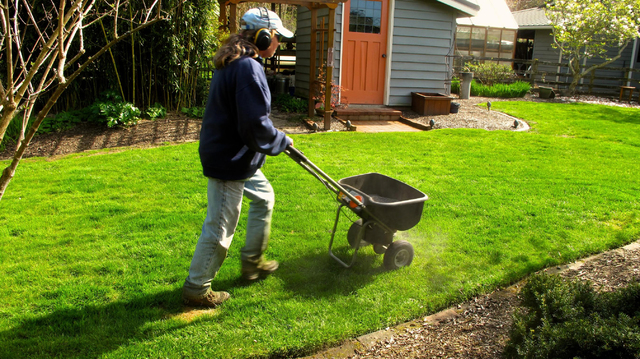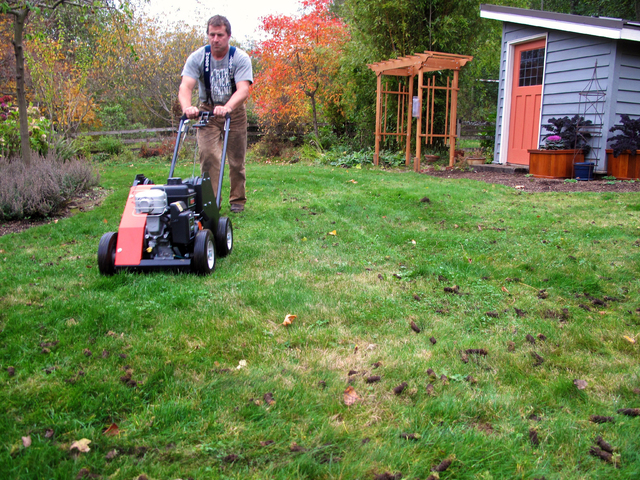Well-managed turf care means more than simply firing up your lawn mower and buzzing around the yard. ADVERTISING Well-managed turf care means more than simply firing up your lawn mower and buzzing around the yard. There’s cutting at the right
Well-managed turf care means more than simply firing up your lawn mower and buzzing around the yard.
There’s cutting at the right height, irrigating with the correct amount of water and fertilizing at the appropriate time, among other things.
Ignore a few of those guidelines and you’ll be the one getting clipped. Financially.
Lawn care Rule No. 1? Know what your grass needs.
“One of the most important factors in developing a healthy stand of turf is using the right plant in the right place at the right time,” said Mark Schmidt, principal scientist at John Deere.
Consider climate when choosing seed mixtures. Yarrow is a good drought plant. Rye grass does well in rain. Clover attracts pollinators. All provide different solutions for the landscape.
“For cool-season grasses, while it may seem opportune to plant grass seed along with other plants in the spring, be cautious,” Schmidt said. “If you do not plant early enough, the grass may not be hearty enough to withstand the summer heat and lower rainfall.”
“The best time to seed your lawn is actually in the fall, so hold off until then if possible,” he said.
Some tips for avoiding the most common lawn-care mistakes:
— Don’t cut too short. Take only a third of an inch off the top. “Shorter clippings break down more easily, allowing some of the natural nitrogen to return to the soil. If you cut too much at a time, the long clippings can cause stress on the grass,” Schmidt said.
— Aerate, which is a matter of removing plugs of soil and thatch. “It encourages deep rooting; improves water, air and nutrient penetration; and promotes growth of healthy organisms,” Schmidt said.
— Don’t ignore your equipment. Keep mower blades sharp and balanced.
— Avoid mowing in the same direction all the time to prevent matting down the turf and inhibiting growth.
— Fertilize in the fall in you live in northern climes. That gives grass an early push after the snow melts in the spring. Apply fertilizer before the rains come if you live in the South. Avoid high-nitrogen products no matter where your location.
— Irrigate frequently but not too heavily each time, said Alec Kowalewski, a professor and turf specialist at Oregon State University. “Turn your water on after Memorial Day,” he said. Set the timer “for three times a week at a quarter of an inch each time. As it heats up, increase the number of days you irrigate.”
Weeds can signal the types of lawn-care mistakes being made, Kowalewski said.
“If you have dandelions in your lawn, you’re probably not irrigating enough,” he said. “Clover? Not enough fertilizer. Crabgrass means you’re scalping the lawn — mowing the grass too short.”
A healthy-looking lawn can mean more dollars in your pocket when you try to sell the property.
“A nice-looking lawn and garden is essential to the first impression,” said Schmidt.
———
Online:
For more about lawn care, see this University of Minnesota Extension website: https://www.extension.umn.edu/garden/yard-garden/lawns/




